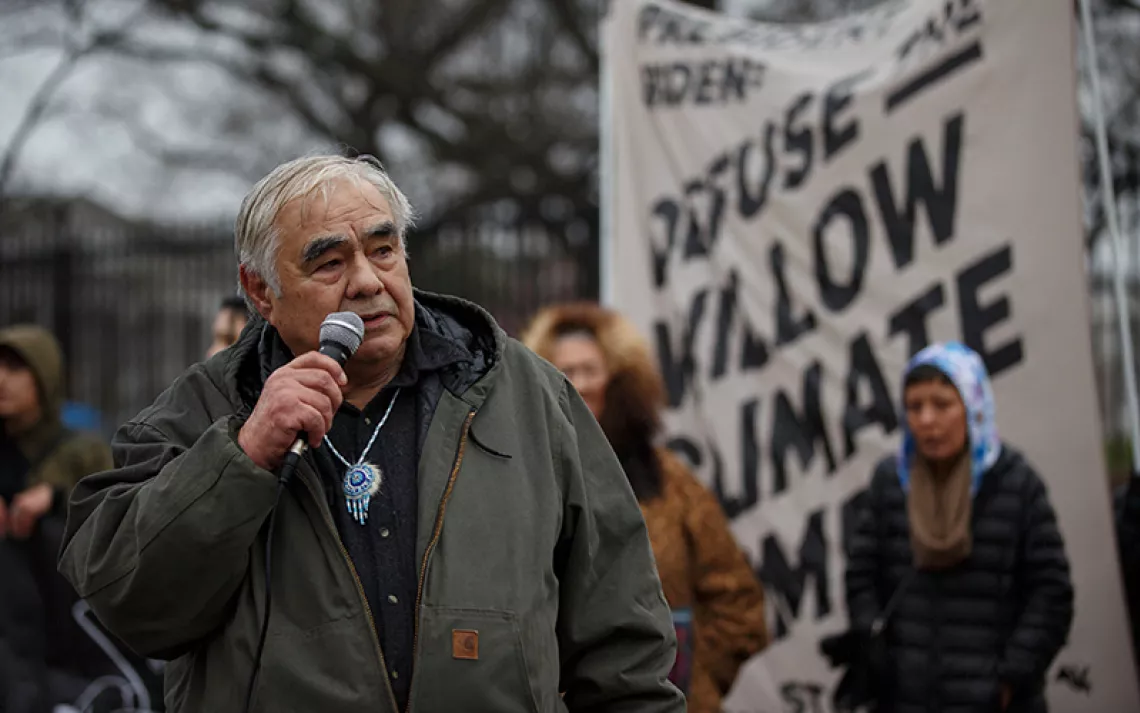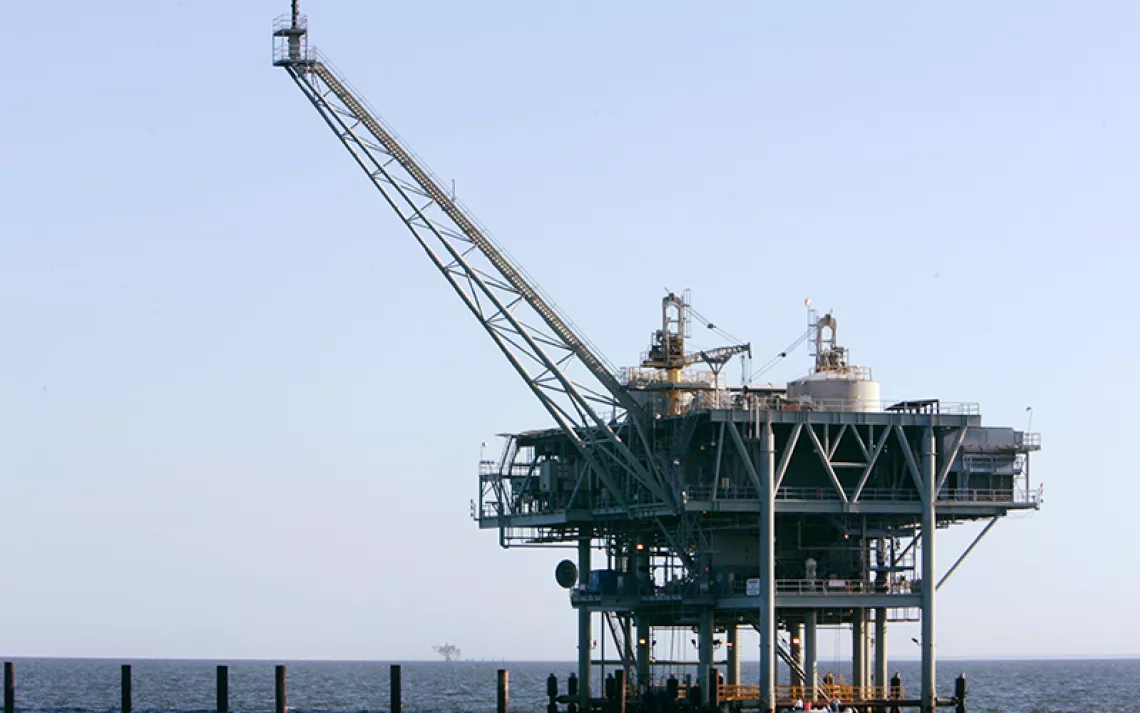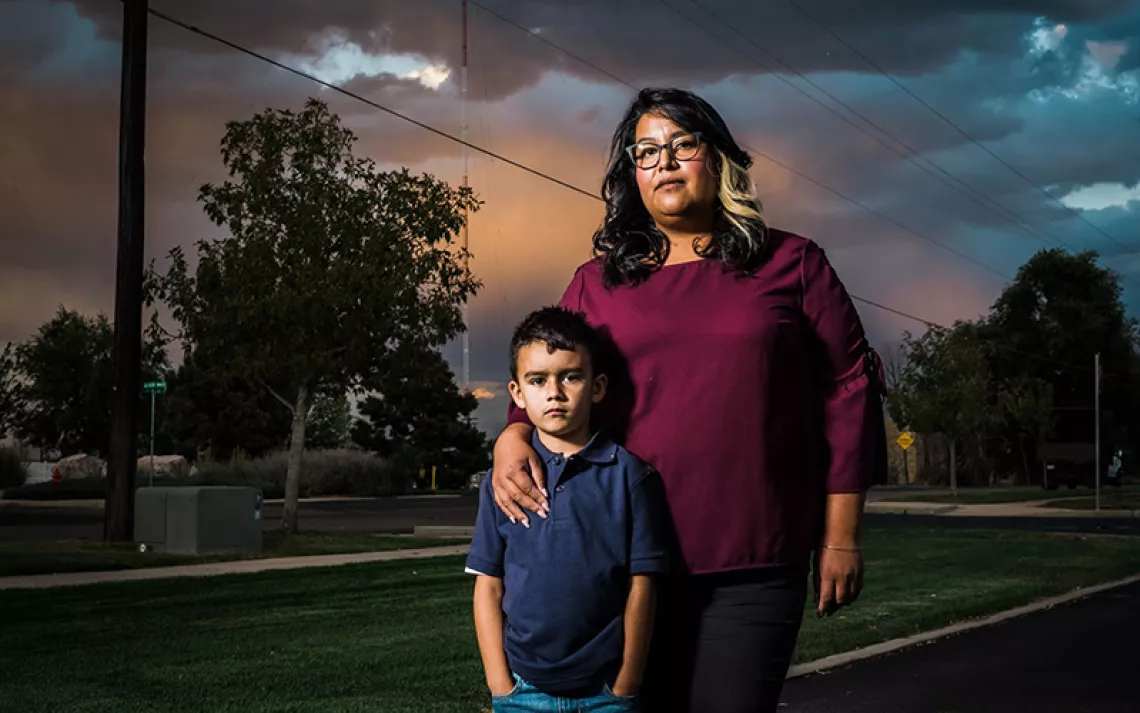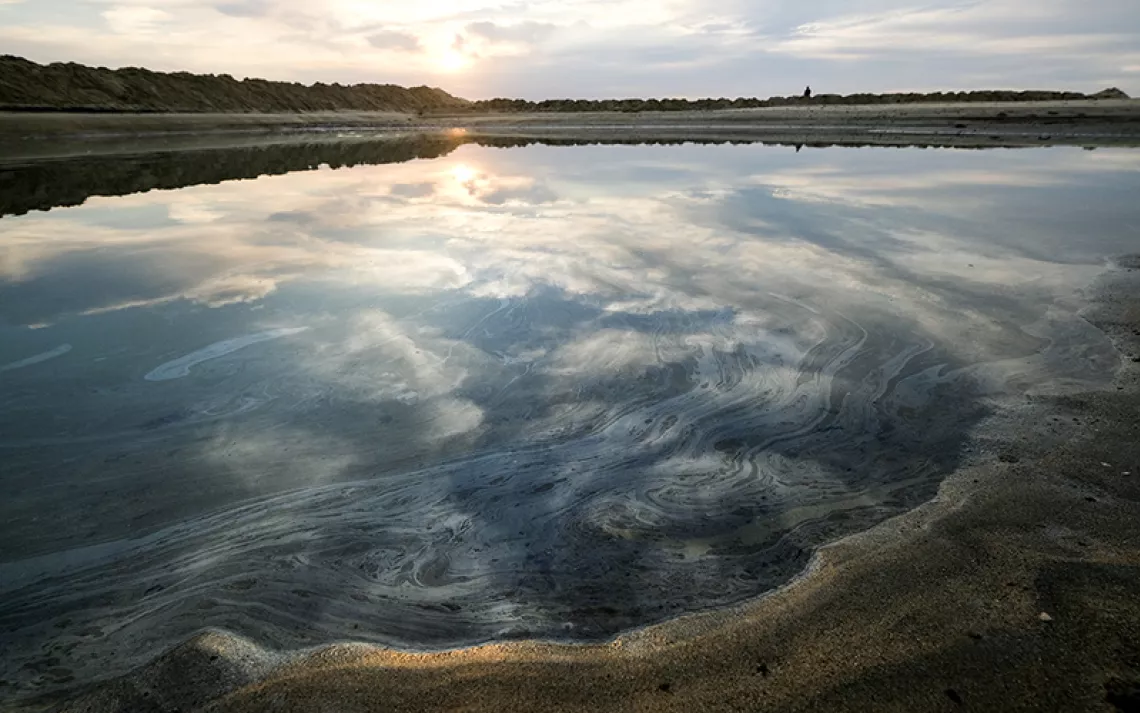Californians Say No to Oil Drilling at Interior Department Hearing
But is the agency really listening?
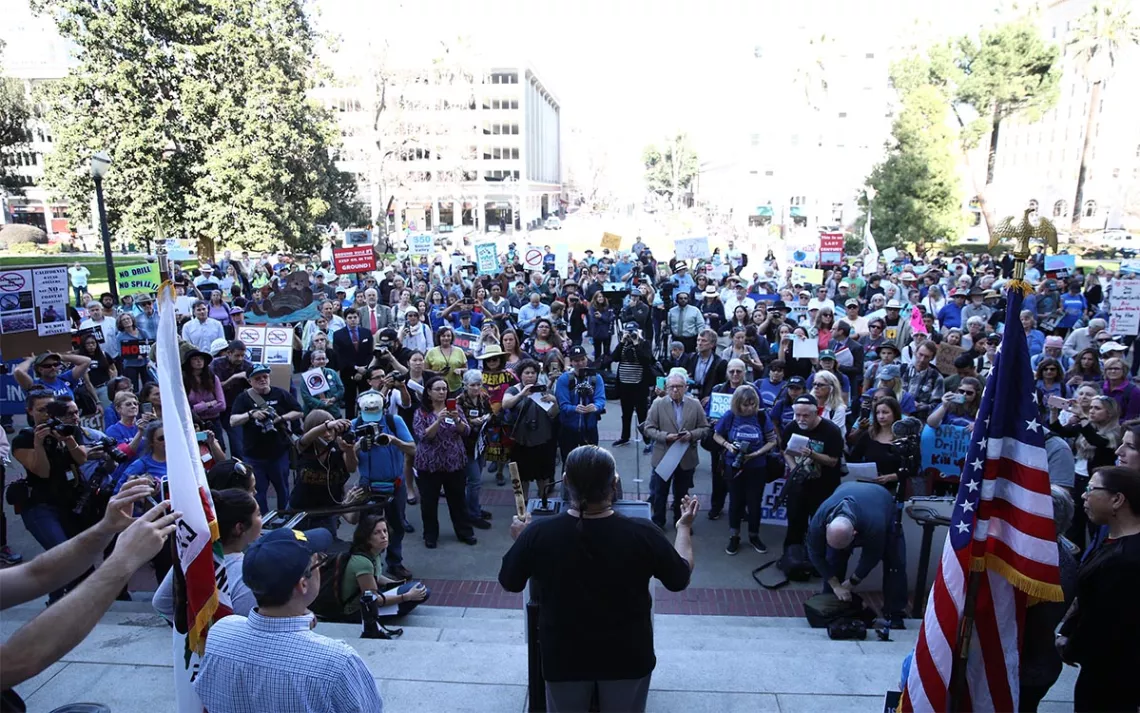
Photo by Drew Bird Photo
Kathleen Stelts spends a lot of time exploring tide pools. She’s a docent with the Laguna Ocean Foundation in Laguna Beach, California. She likes to educate visitors about the delicate creatures they find on the rocks. “I tell the kids, ‘See that crab? If you poke it, it would be like someone walking up to you and punching you in the face,’” she said.
When Stelts heard the news in January that Interior Secretary Ryan Zinke was proposing to open up California’s coast for oil and gas drilling, she felt like she had just been punched in the face. That’s why on Thursday morning, she woke up at dawn, piled into the car with four of her friends, and drove 400 miles north to attend the only public hearing in California about the plan.
The proposal seeks to make more than 90 percent of U.S. coastline available to oil and gas leasing, starting in 2019. The hearing on Thursday was held in Sacramento, far from any beach, but hundreds of people from coastal communities throughout the state managed to show up anyway, hoping to be heard.
Before the hearing, a broad coalition of organizations and tribal groups including the Sierra Club, the Center for Biological Diversity, Ocean Protectors, and Brown Girls Surf hosted a robust rally outside the capitol building. They were joined by assembly members Al Muratsuchi, Monique Limón, and Jim Wood; State Controller Betty Yee; and other elected officials. One common theme among speakers was Zinke’s announcement, shortly after the plan was published, that Florida would be exempt from offshore drilling. In her speech, Yee said to cheers, “Thank you for your concern for the beaches of Mar-a-Lago. Now please show the same concern for us.”
Protesters chanted and waved colorful signs with messages like “Take a Knee for the Environment” and “I Like My Beaches Without Black Tides.” A handful dressed up as sea creatures, and a lone polar bear wandered the crowd.
Robin Knox and her daughter, Jessica, had traveled from Oakland to be there. As a young adult, Knox had held a city job that brought her out to the beach. “What you see is different when you work there than when you just visit,” she said. “You see trash. You see dead fish that were obviously poisoned by something in the water. That was a turning point for me.” Since then, she’s volunteered regularly for beach cleanups. Two years ago, Jessica told her she wanted to take part in a local organization called Brown Girls Surf. “I thought she was crazy, because I didn’t know black people surfed,” Knox laughed. The organization encourages women of color to take up surfing, and Jessica was attending the rally as one of their youth leaders.
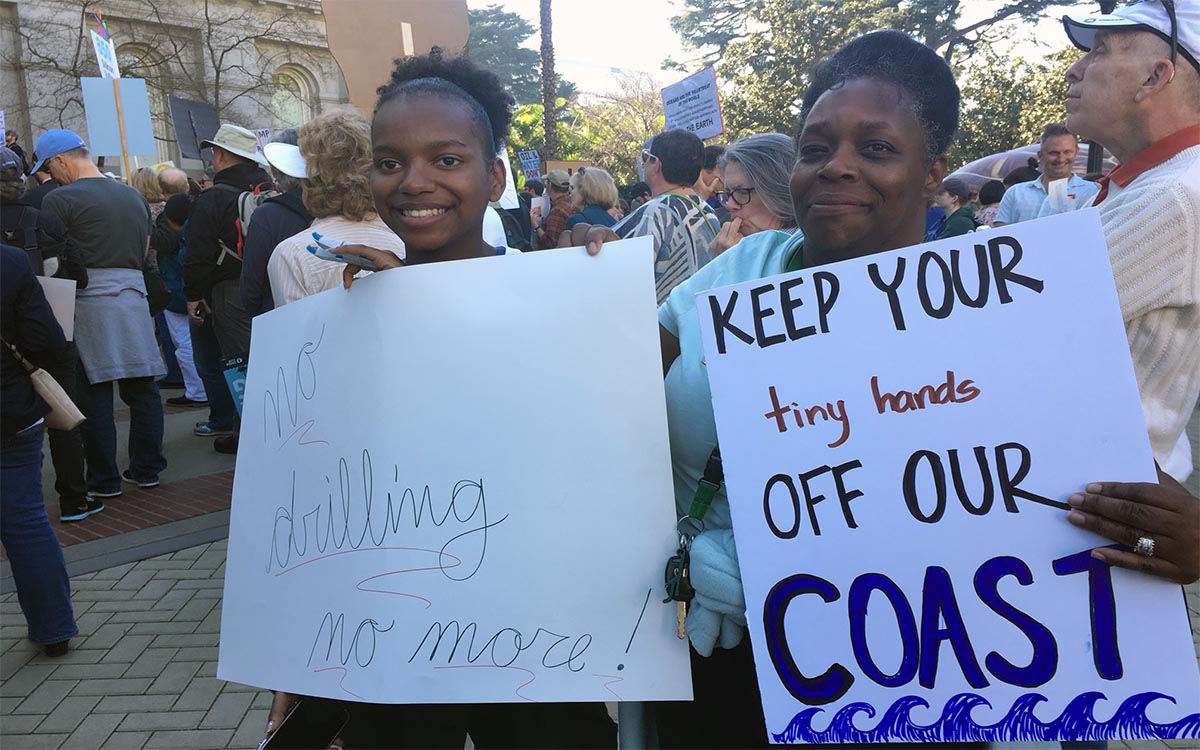
Robin and Jessica Knox | Photo by Wendy Becktold
Opposition to the Interior Department’s plan has been widespread in coastal states but particularly in California, where offshore drilling developments have been banned in state waters since 1969, and no new federal leases have been issued since 1984. According to a 2017 statewide survey, 69 percent of Californians oppose any new offshore drilling.
“You don’t get to that number without support across party lines,” assemblyman Al Muratsuchi told Sierra just before the rally started. He is coauthoring legislation with assemblywoman Monique Limón that would prohibit any new infrastructure transferring oil and gas from federal waters back to land. “We’re basically trying to take away the economic incentive for offshore oil drilling,” he said. State senator Hannah-Beth Jackson is introducing a companion bill in the state senate.
Other state officials have also come out strongly against the plan to drill offshore. Governor Jerry Brown has been a vocal opponent, and at least 26 cities and counties in California have passed resolutions against offshore drilling for oil and gas. The day before the hearing, the State Lands Commission wrote in a letter to federal officials, “Given how unpopular oil development in coastal waters is in California, it is certain that the state would not approve new pipelines or allow use of existing pipelines to transport oil from new leases onshore.”
On Thursday morning, the California Assembly passed a joint resolution expressing its opposition to the proposed leasing plan. Assemblyman Jim Wood, who coauthored the resolution, said in a statement, “I represent more coastline than any other assembly district in California—300 beautiful miles of it to be exact. Our coastline is rugged, majestic, and pristine, and it should stay that way.”
California’s business community is also galvanizing against the proposal. Many see oil drilling as a fundamental threat to a coastal economy that contributes nearly $20 billion to the state’s GDP and generates half a million jobs. This week, over 1,000 West Coast companies launched the Business Alliance for Protecting the Pacific Coast, which is modeled after a similar alliance on the East Coast. Affiliates include the Pacific Coast Federation of Fishermen's Associations, Klean Kanteen, The North Face, Patagonia, and the Surf Industry Manufacturers.
Noah Oppenheim is the executive director of the Pacific Coast Federation of Fishermen’s Associations, which represents over 750 fishing families and companies. “We’re fundamentally dependent on a sustainable seafood supply for our members’ livelihoods, and offshore drilling is a dire threat to those livelihoods,” he said in a phone interview. “We’re not just worried about drilling; we’re worried about all aspects of the oil economy.”
The hearing on Thursday was among the first of 23 scheduled around the country over a 60-day comment period. The format of the event was unconventional: Rather than having the opportunity to speak from a podium, participants were expected to mill around the room and talk individually to Bureau of Ocean Energy Management (BOEM) officials, who were stationed by poster boards detailing topics like “environmental scoping.” Tables were set up in the corner of the room where participants could write their comments on paper or enter them online. The frustration was palpable. “I came to give a public comment, not have a one-on-one with a BOEM employee,” one man was overheard saying. At times, groups of people erupted into chants of “Where’s the hearing?”
The format of the meetings is actually a hold-over from the Obama administration, but the inability to make a verbal statement is feeding the sense that the BOEM doesn’t really want to hear what people have to say. “It’s demoralizing,” says Izzy Goodman, a Sierra Club organizer who attended a hearing in Salem, Oregon. The decision to hold only one meeting per state, and to locate them only in state capitals, most of which are located inland, is not helping matters. “Clearly, BOEM officials are just doing the minimal that they need to do,” says Athan Manuel, the director of Sierra Club’s Lands Protection Program.
Oppenheim agrees. “If BOEM really wanted to engage with ocean stakeholders and hear from fishermen what the impact of oil drilling would be to their livelihoods, they would schedule meetings with the stakeholders themselves. They would go to port. They would meet with their representatives, like us. They didn’t do any of that.”
As Thursday’s hearing wound down, Stelts was outside on the sidewalk with her friends, their signs dangling by their sides. Was she glad she came all this way? She paused. “Yes,” she said. “But inside was disappointing. . . . It doesn’t seem like they were really listening.”
 The Magazine of The Sierra Club
The Magazine of The Sierra Club
